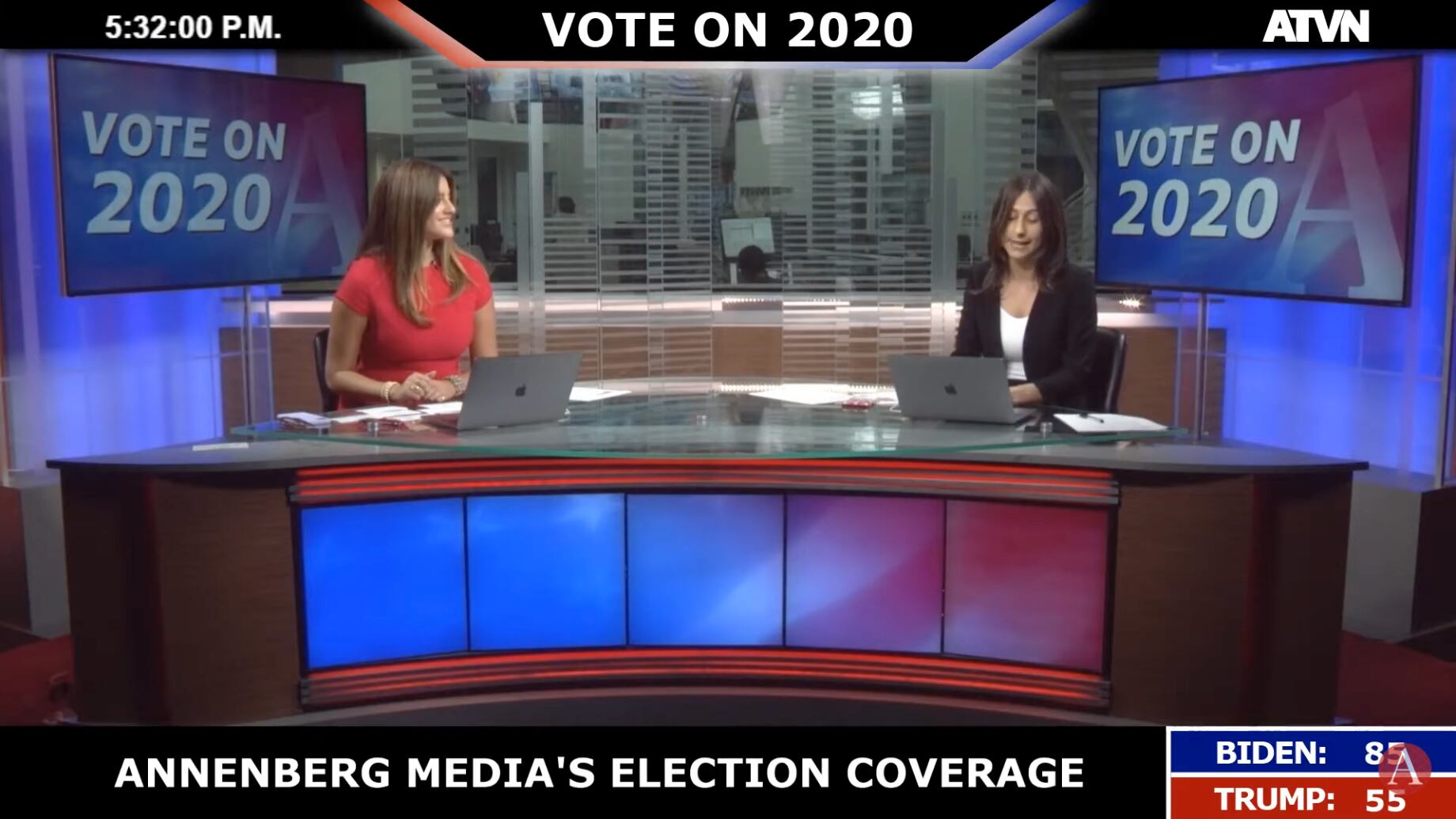At 5:30 p.m. on Election Day, I sat down, exhausted, and turned on my TV to watch the newscast I had spent all day producing. My anchors, Zoe Ginsberg and Ella Katz, and my executive producer, Alex Song, were in the Media Center preparing to go live for the first time since March. About seven minutes in, the livestream on YouTube abruptly cut out.
The rest of my show ultimately did not make it to air. I’m disappointed, of course, but I’m not upset. Sometimes I forget to appreciate how easily we are able to cover our mistakes when we edit the show and then upload it to YouTube. Putting together a live show means so many more variables that are out of my control. Despite not being able to see the finished product, there is still so much I am proud of in my team’s work on Election Day.
Two weeks before Election Day, I started planning my show. I knew that Alex and one of our other executive producers, Jillian Carmenate, were planning to cover everything from the California propositions to the Senate and presidential race later in the evening. My show would air at 5:30 p.m., too early to talk about most of the results coming in, so I wanted to focus my show on student voices.
I knew that I wanted almost all of my voices to be students, but I also made another important decision in preparation for the show — the tone. Over the course of this semester, the biggest part of working in person that I missed was the banter between anchors and the conversational tone of the show. I’ve already made some attempts to reincorporate some conversation through having my anchors (and sports anchors) banter over Zoom and even recording a “live” interview with our guests in our “BRB” segment.
Having our anchors in the studio meant that they could actually talk to each other face to face, and not having a teleprompter operator during my show also meant that writing scripts would be futile anyway. One major change that we made for our Election Day coverage was having all of our multimedia journalists (MJ) write talking points instead of a full script, and the anchors could introduce each segment in a conversational way. I thought this worked as a solution to our lack of a teleprompter and to bring a more approachable feel to the show.
Another idea that I had prior to knowing that we would be broadcasting live is incorporating some vlog-style segments, stretching the format of broadcast news. Giving interviewees questions in advance is always frowned upon in journalism (as it should be), but I made the choice of asking students to document a part of their life leading up to the election. In this case, I didn’t think that their responses would be any different than if I had interviewed them, and logistically it would have been hard to follow them throughout the day.
One aspect of this election that I found notable was the surge in young people getting involved with politics. One way this played out was through poll workers. Going with our theme of focusing on students, I was able to find three students who were going to be working as poll workers on Election Day. I asked each of them to document their day with at least two videos, one recorded before the day started and one at some point during the day. I didn’t give them specific questions but rather asked them to share their feelings going into the day and what the experience was like. Leanna Faulk did an excellent job of editing these three stories together. I thought she was able to strike the right tone between a more casual, YouTube-style video and our more traditional TV style.
For our wellness segment, BRB, in the days leading up to the election I had students document their hobbies and talk about how they were managing stress. I loved how we got a wide range of hobbies, from baking and juggling to roller skating and surfing, a good contrast to yoga and mindfulness, featured in our previous two shows. In this segment, I thought we got especially good visuals. Quincy Hirt, who talked about his baking hobby, documented his entire bread-making process for us!
Yes, it is a loss that some of the content we had planned for the show did not ultimately make it to air, but I can’t help but be extremely proud of my entire team. Not only did we get really great student voices, but we were able to get everything done by a little before 4:30 p.m., two hours earlier than usual. From my producing experience thus far, I’ve learned that facing unexpected challenges is the norm, and that the best thing a producer can do is to continue to adapt and overcome them.
